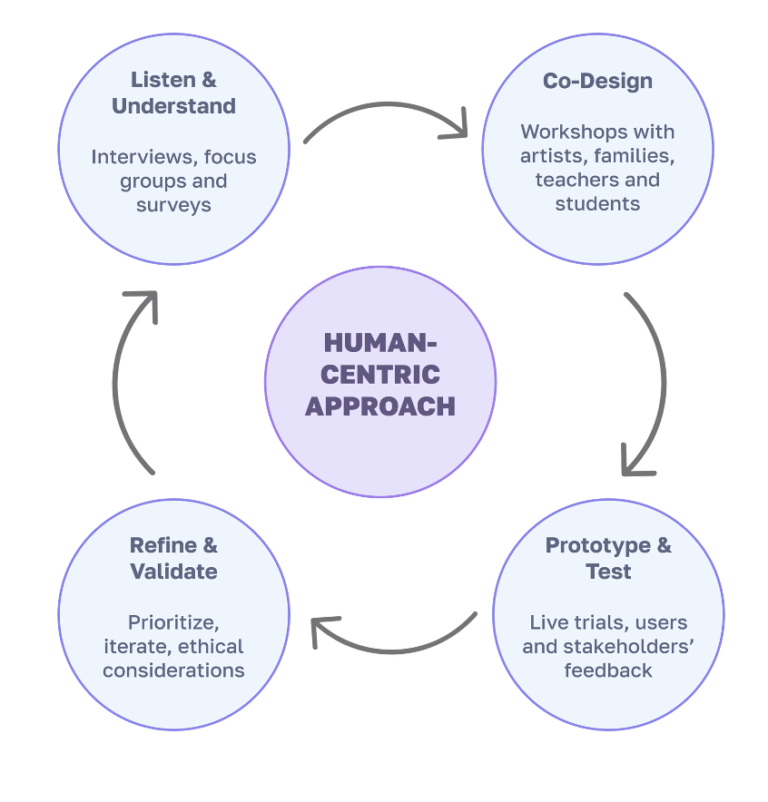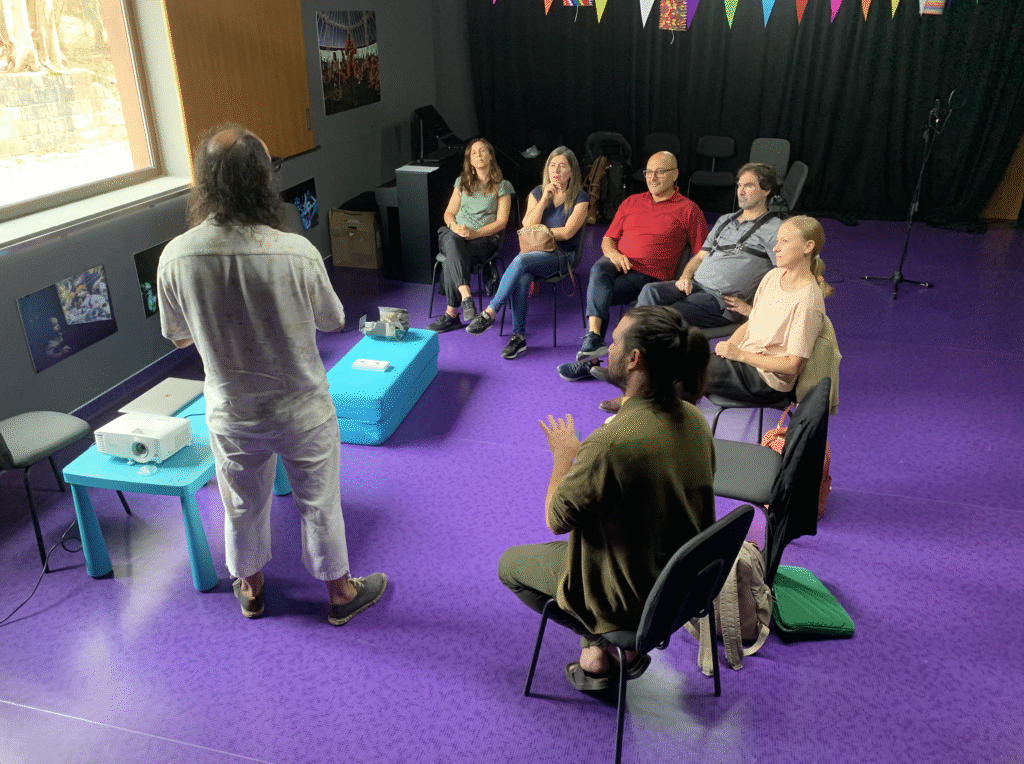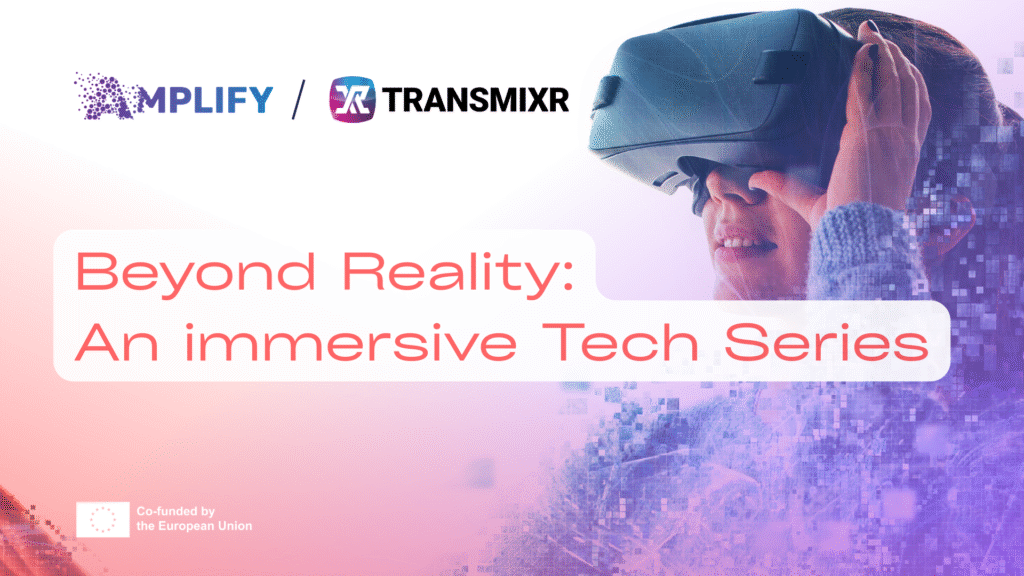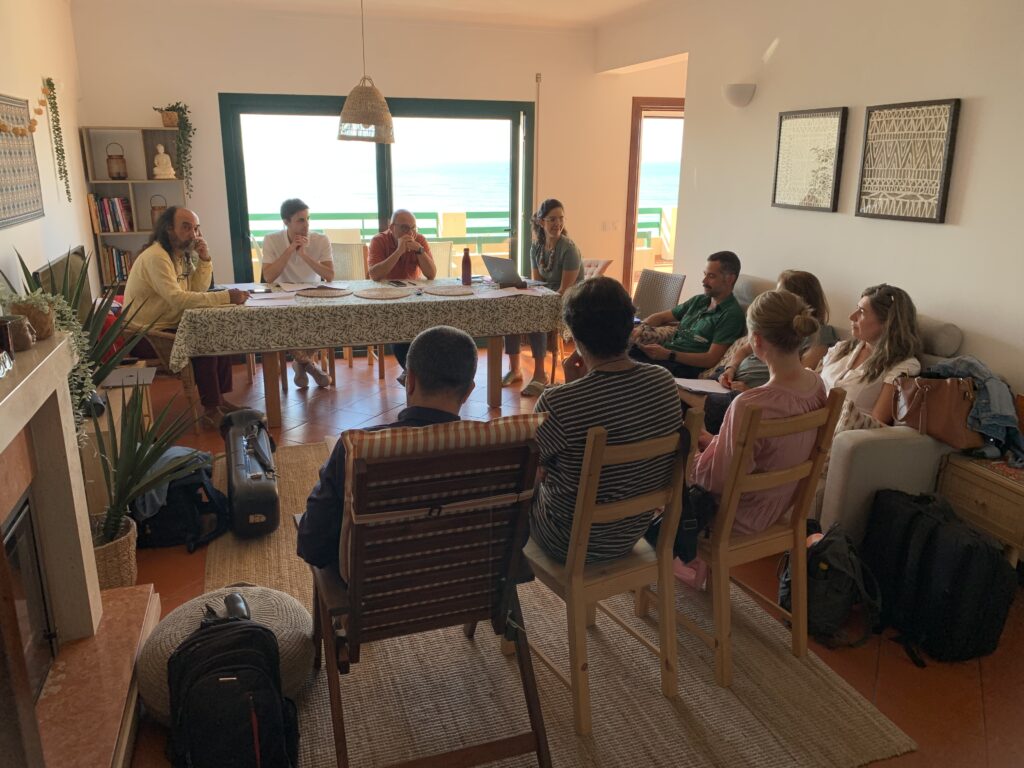Human-Centred Design Shaping the Future of XR and AI in the Arts
Katrien De Moor, David Palma and Ibrahim el Shemy
6 october 2025
New digital tools powered by XR technology and AI are transforming creative processes and how people connect through music and art across the cultural and creative industries (CCIs). These innovation can bring audiences, communities, and stakeholders closer to the creation process, foster diverse participation, and unlock new artistic experiences. However, such potential is only achieved through a genuine ethical and human-centric process to designing and implementing these tools. Simply providing digital solutions does not guarantee adoption or meaningful change in established social and power structures. To make sure that AMPLIFY enhances new artistic performances, audience engagement, and empowers a new creators, we actively involve audiences, artists, and stakeholders at every step of the AMPLIFY PORTABLE and AMPLIFY IMMERSIVE design process. This is about co-creating the future of digital art and music.
Human-centric, ethical design approach: WHAT
Our aim is to design with the relevant communities and stakeholders, not for them.
AMPLIFY’s approach is rooted in human-centred and inclusive design, placing people at the heart of digital innovation to enrich emotional and creative experiences with music. Our aim is to empower artists, audiences, students and teachers, families and babies, and especially other communities traditionally marginalised. We offer diverse means of expression and seek to understand their visions, needs, as how technology can remove current barriers. Stakeholders are engaged as co-designers throughout the technology’s design and evaluation. This ensures that AMPLIFY tools are driven not just by technological possibilities, but by the real practices, aspirations of different communities. Rather than simply building tools for users, AMPLIFY co-creates them through a participatory, value-driven approach. Continuous feedback between the human-centred team and the technical partners ensures every tool is ethical, inclusive, and grounded in real-world experience. Our ethical focus extends beyond research methods to the broader implications and ethical dilemmas that may arise from AMPLIFY technology. Drawing on established ethical frameworks, we reflect on and negotiate what ethical design means, and on how to ensure that key values and ethical principles are considered in all AMPLIFY pilots and technology design.
Human-centric, ethical design approach: WHY and HOW?
A genuine human-centric approach increases the likelihood of solutions being adopted and integrated into real practices. This is one of AMPLIFY’s core ambitions. It democratises technology design, empowers stakeholders, ensures inclusivity, driving future innovation. By enabling diverse stakeholders (e.g., artists, tutors, audiences, communities, families) to express themselves in new artistic formats, the project ensures that technologies like XR and AI enhance, not replace, the human touch in music and arts. Here, innovation is about collaboration and connection, building tools that support human creativity.
The goal is clear: digital innovation in the CCIs should support creativity and creates new possibilities for artists, musicians, tutors, audiences to lead. This means a commitment to diversity, accessibility and ethical digital innovation. Culture, art and music are vital for social inclusion, education, well-being, and economic growth. By uniting these values, AMPLIFY is helping to set best practices for human-centred, ethical use of AI, XR and immersive technologies in the CCIs.
As illustrated in the figure below, the Human-centric begins by listening to the key stakeholders in each pilot, understanding their practices, needs, expectations. Stakeholders then participate in co-design activities, helping to shape solutions and set priorities. The technical team develops and tests prototypes, which are refined and validated with stakeholders through empirical studies both in lab and real-world settings.

The human-centric process in practice
Below are highlights from ongoing human-centric activities in the four AMPLIFY pilots, all connected by shared design principles.
Pilot 1: Renewing traditions
Tutors and students took part in focus groups and co-design sessions to explore how technology could reshape online music tuition, especially for traditional Gaelic music in remote areas. Their voices are shaping AMPLIFY PORTABLE, an AI-powered tool for digital music learning. The process reinforced that technology should support inclusive, interactive, and community-driven learning, while preserving human connection.
Pilot 2: Music for babies
Through focus groups, questionnaires, and co-design with families and artists, AMPLIFY PORTABLE is being developed for multi-sensorial, participatory concerts for babies. This pilot explores how babies can become active participants, influencing performances. Families welcomed the idea of expanded access and deeper engagement, while artists reflected on technology’s role in enhancing, not disrupting, the artistic experience. The process highlighted the need for digital tools to support inclusive, emotionally rich, and culturally meaningful interactions, placing babies at the creative heart of the concert.
Pilot 3: Next Stage
A diverse group of artists, audience members, and event organisers took part in a study and workshop to explore how immersive technologies could enrich live music and enable new musical experiences. AMPLIFY’s approach ensured emotional and social connection, presence, and community remained central to AMPLIFY IMMERSIVE. While participants saw potential for greater accessibility and creative expansion, they also voiced concerns about losing spontaneity and cultural meaning. The process emphasised that technology should complement the social essence of music and offer new ways for artistic expression.
Pilot 4: Revealing Opera
AMPLIFY engaged community members, social activists, historians, and artists in co-design sessions to explore how immersive tools could support an opera co-created with the people of Sant Andreu. Participants guided the development of AMPLIFY IMMERSIVE to ensure it authentically captures emotions, voices, and local histories. The pilot emphasised using immersive technology to honour memory, foster intergenerational dialogue, and connect professional and non-professional artists, while preserving the neighbourhood’s cultural integrity.
Next steps
We are now iteratively prototyping and testing AMPLIFY PORTABLE and AMPLIFY IMMERSIVE, with tailored evaluation activities that actively involve diverse stakeholders across all pilots.




